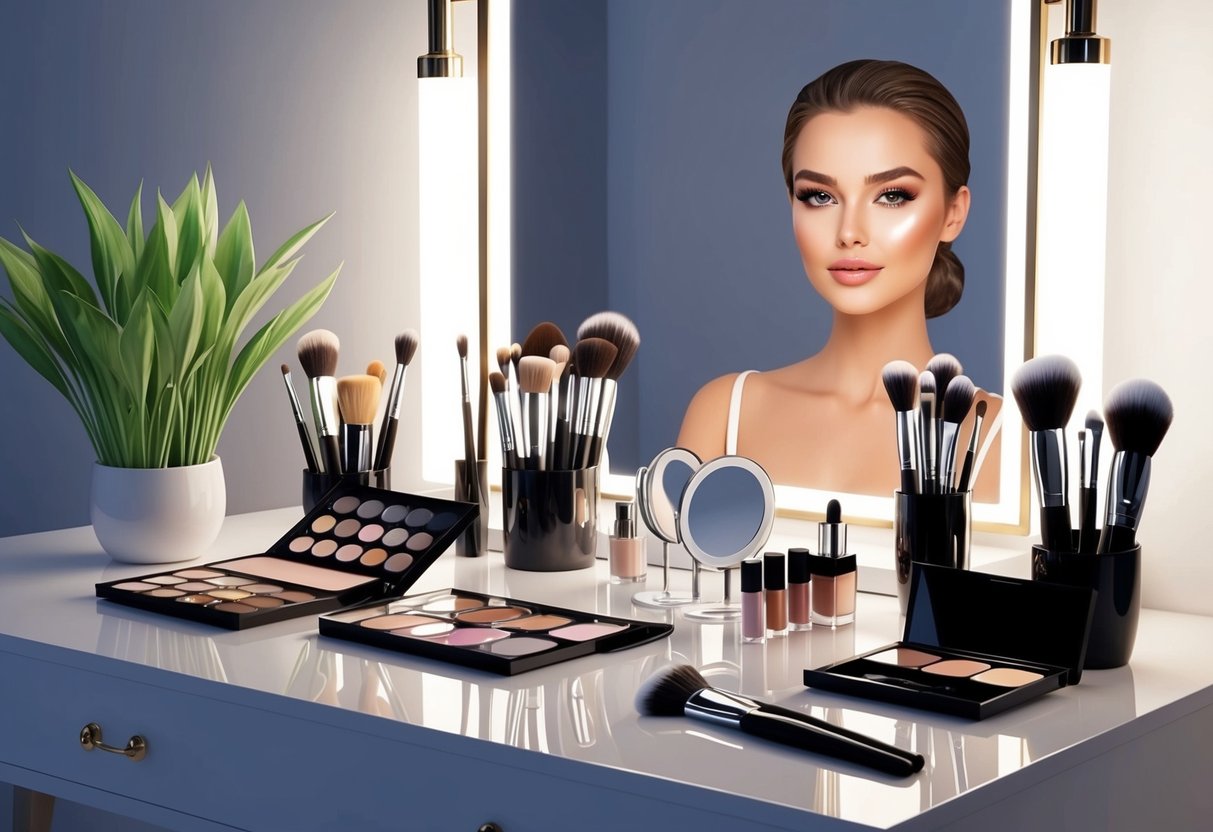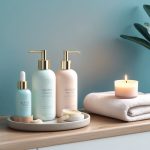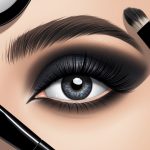Flawless Natural Makeup Looks: Step-by-Step Guide for Beginners and Pros
Lip Color for a Flawless Finish
Finding the right lip color completes a polished look and enhances natural features. Application techniques and careful shade selection can create a seamless, healthy appearance that looks effortless.
Choosing the Best Natural Lip Shades
Selecting a natural lip shade starts with considering skin undertones, as they influence which nude, pink, or berry shades look most flattering. For warm undertones, peachy or caramel nudes and soft coral shades often work well, while cool undertones generally suit rose or mauve hues.
Neutral undertones can wear both easily. Sheer and satin finishes, rather than heavy mattes, help maintain a subtle, fresh look.
It’s helpful to try swatches on both the wrist and lips to see how the color interacts with natural pigmentation. For a simple daily routine, tinted balms or soft lipsticks in a “your lips but better” shade offer comfort and color.
A brief comparison of popular natural lip colors:
| Undertone | Best Shade Examples | Finish Type |
|---|---|---|
| Warm | Peach, Caramel Nude | Satin, Sheer |
| Cool | Rose, Soft Mauve | Satin, Gloss |
| Neutral | Pink, Beige | Satin, Balm |
For personalized tips on picking natural lip products, visit this guide to natural makeup looks and routine.
Techniques Using Lip Liner, Lipstick, and Gloss
Lip liner shapes and defines the lips, creating a precise edge and preventing lipstick from feathering. Begin by outlining just outside the natural lip line for subtle fullness, using a liner that matches or closely resembles the chosen lipstick shade.
After lining, fill in the lips with lipstick using a brush for precise placement or apply directly from the bullet for more convenience. Choose a creamy, blendable formula for a smooth, natural texture.
Blot and layer for longer wear and to prevent excess shine if a matte appearance is preferred. Top the lips with a clear or tinted gloss to enhance fullness and create a fresh finish.
For dry lips, a lightweight gloss or moisturizing balm keeps lips hydrated. Combining liner, lipstick, and gloss ensures the lip color looks even, natural, and lasts throughout the day.
For beginners and pros, detailed tutorials like this step-by-step flawless makeup application guide can help perfect these lip color techniques.
Setting and Perfecting the Makeup Look

Choosing the right finishing products is essential for locking in a flawless natural makeup look and ensuring longevity. Understanding the benefits and timing of setting powders and sprays can help maintain smooth, even skin throughout the day.
When to Use Setting Powder vs. Spray
Setting powder and setting spray serve different but complementary purposes. Setting powder is ideal for controlling excess oil, reducing shine, and blurring pores, especially on oily or combination skin.
Loose translucent powders offer a lightweight feel, while pressed powders allow precise application to specific areas like the T-zone. Setting spray, such as the popular All Nighter Setting Spray by Urban Decay, is designed to lock makeup in place and add a natural finish.
Individuals with dry or mature skin may prefer setting sprays for their hydrating effects that prevent makeup from looking powdery. For the best results, powders should be applied as the final step after cream or liquid products, while sprays are misted over the entire face once all makeup is complete.
| Use For | Setting Powder | Setting Spray |
|---|---|---|
| Shine Control | Excellent | Light/None |
| Hydration | None | Good (some formulas) |
| Makeup Lock | Good for oily areas/creases | Excellent all-over hold |
Maintaining a Fresh Look All Day
To keep a natural makeup look from breaking down, regular touch-ups and smart layering are key. Blotting papers help absorb oil without disturbing makeup.
A light dusting of setting powder in the afternoon can combat shine and refresh the finish. Avoid applying too much product at once, as layering thin, buildable amounts enhances longevity and prevents a cakey appearance.
Using a long-lasting setting spray, such as All Nighter Setting Spray, creates a lightweight seal over the makeup and makes it more resistant to sweat and humidity. Keep a travel-size bottle in a bag for midday spritzing to revive makeup and prevent fading or patchiness.
Consistency in finish between setting products, like choosing a dewy setting spray with minimal powder, ensures that skin looks naturally radiant and never heavy.
Tailoring Your Routine for Skin Type and Coverage
Skin type and desired finish play a crucial role in building a makeup routine that looks both flawless and natural. Selecting the right products for dry skin or adjusting techniques for higher coverage ensures the best possible results.
Natural Makeup for Dry Skin
Dry skin benefits from gentle, hydrating products that enhance the complexion without emphasizing flakes or rough spots. A dewy base starts with thorough moisturization and a lightweight, illuminating primer.
This helps smooth texture and create a more radiant, even look. Opt for sheer or hydrating foundations and BB creams that add moisture and never settle into fine lines.
Avoid heavy powders and matte formulas, which can accentuate dryness. Instead, use a damp beauty sponge to blend creamy concealers or tinted moisturizers for an undetectable finish.
To maintain a fresh appearance, set makeup with a fine mist or hydrating setting spray rather than powder. If additional coverage is needed, tap lightweight concealer over problem areas.
Choosing sheer, cream-based blushes and highlighters will keep the complexion glowing while reducing the risk of cakiness. For more step-by-step advice, visit this guide on natural makeup for any occasion.
Tips for Dry Skin:
- Use a hydrating primer
- Choose cream formulas
- Avoid matte powders
Achieving Medium to Full Coverage
Those seeking medium to full coverage will need to build their base carefully for a smooth, non-cakey finish. Start with a primer suited for the skin type and target concerns like pores or redness.
Apply a medium or full coverage foundation in thin, even layers, blending thoroughly with a brush or sponge. Focus additional coverage only where needed, especially under the eyes or on blemishes, using a buildable concealer.
Set areas prone to movement or shine—such as the T-zone—with a finely milled powder, but use only a small amount to maintain a natural effect. To balance the refined complexion, use contour, blush, and highlighter in moderation.
Cream or liquid options often blend better over fuller coverage bases. For specific step-by-step processes, this flawless makeup breakdown for beginners covers additional application techniques.
Product Suggestions:
| Desired Finish | Product Type | Tools Needed |
|---|---|---|
| Medium Coverage | Liquid Foundation | Sponge/Brush |
| Full Coverage | Cream Foundation | Dense Brush |
| Extra Concealing | Full Coverage Concealer | Precision Brush |



